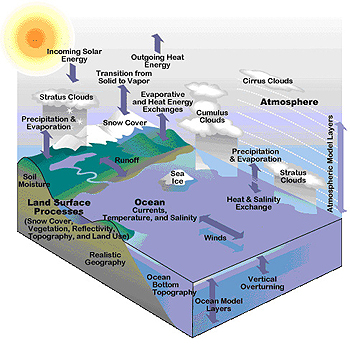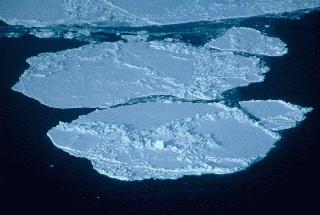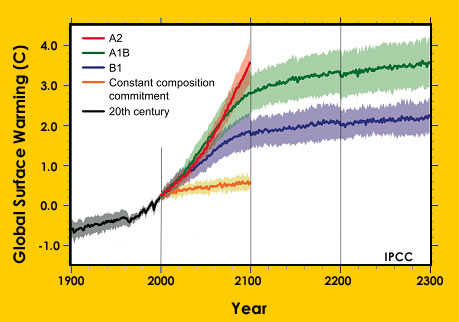Click on image for full size
UCAR
What Is a Climate Model?
Global climate models (GCMs) use mathematical equations to describe the behavior of factors that impact climate. These factors include dymanics of the atmosphere, oceans, land surface, living things, sea ice, and energy from the Sun. Thousands of climate researchers use global climate models to better understand the long-term effects of global changes such as increasing greenhouses gases or decreasing Arctic sea ice. The models are used to simulate conditions over hundreds of years, so that we can predict how our planet’s climate will likely change.
There are various types of climate models. Some are based specifically on certain components that affect climate such as the atmosphere or the oceans. Models that look at few variables of the climate system may be simple enough to run on a personal computer. Others attempt to integrate many factors of the atmosphere, biosphere, geosphere, hydrosphere, and cryosphere to model the entire Earth system, including the interactions and feedbacks between systems. Many of these complex models are so elaborate that they must be run on supercomputers. All climate models must make some assumptions about how the Earth works, but in general, the more complex a model, the more factors it takes into account, and the fewer assumptions it makes. At the National Center for Atmospheric Research (NCAR), researchers run complex models of the Earth's climate system that include atmosphere, oceans, land, and cryosphere, and associated biogeochemistry and ecology. Their highly-complex Community Climate System Model is so complex that it requires about three trillion computer calculations to simulate a single day of global climate. It can take thousands of hours for the supercomputer to run the model. The model output, typically many gigabytes large, is analyzed by researchers and compared with other model results and with observations and measurement data.
There are currently several other complex global climate models that are used to predict future climatic change. The most robust models are compared by the IPCC (Intergovernmental Panel on Climate Change) as they summarize predictions about future climate change.














